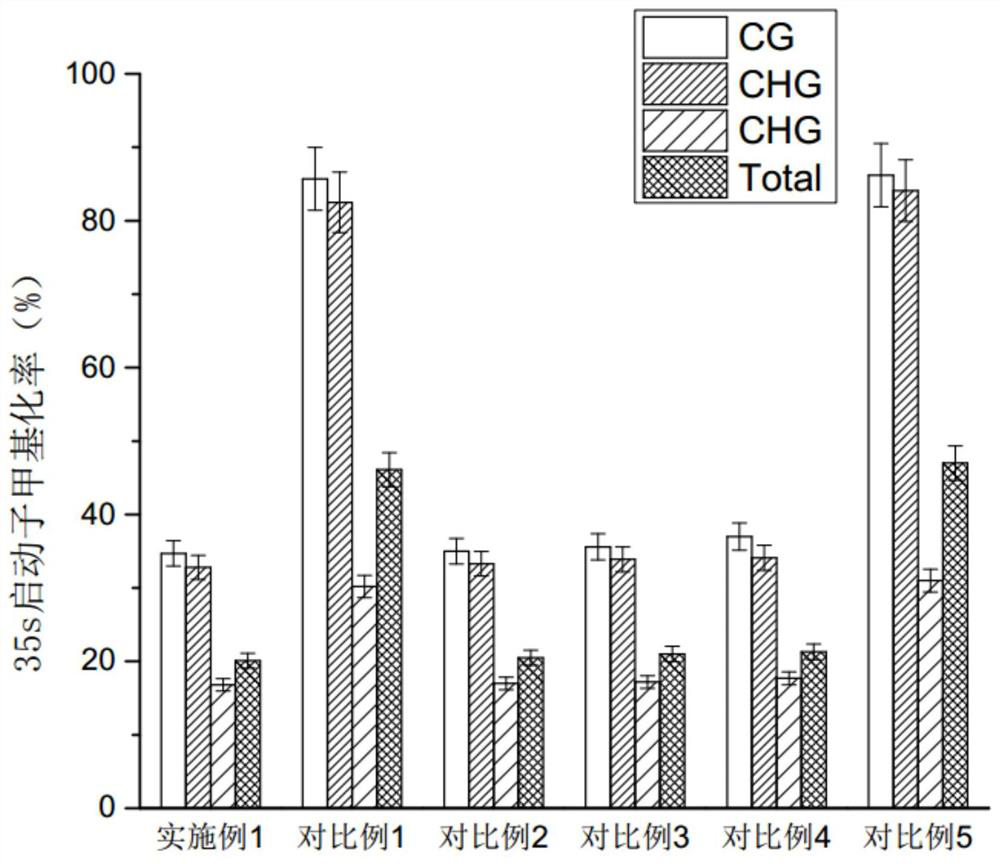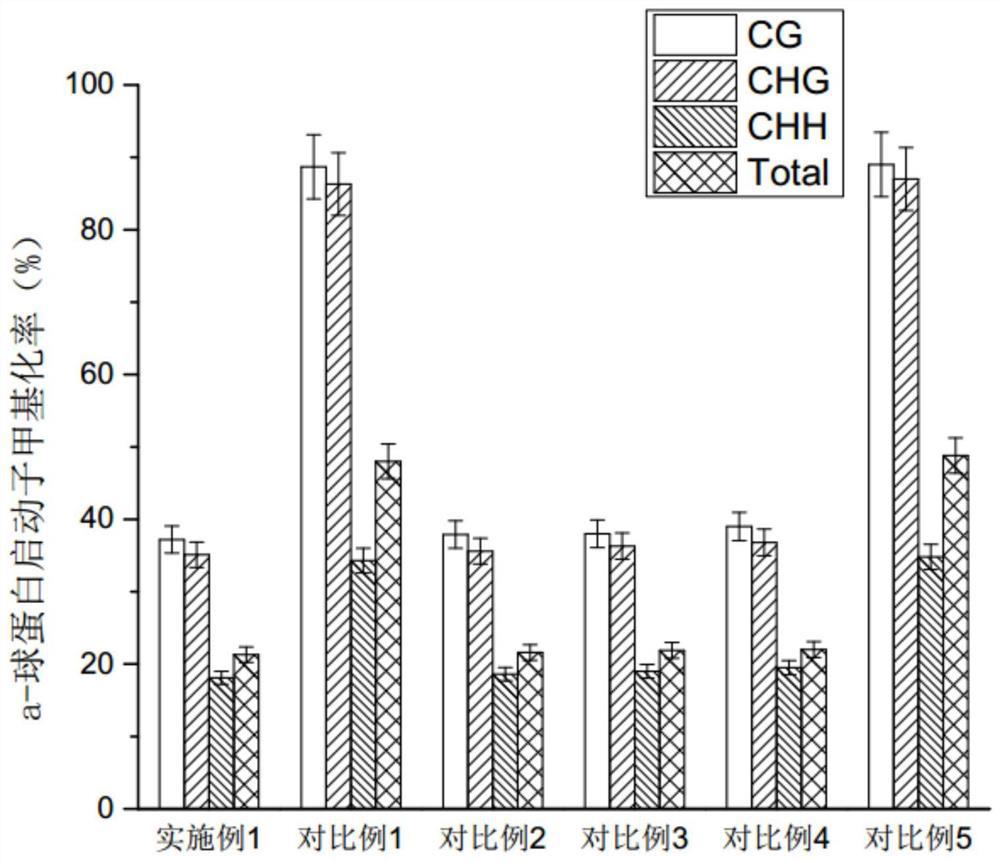A kind of breeding method of pest-resistant and low-phenol cotton variety
A cotton variety and insect-resistant cotton technology, which is applied in the field of genetic engineering, can solve the problems such as no reports of successful breeding of dominant low-phenol transgenic insect-resistant cotton, and achieves inhibition of programmed death, short time consumption, and reduced cotton production. The effect of phenolic content
- Summary
- Abstract
- Description
- Claims
- Application Information
AI Technical Summary
Problems solved by technology
Method used
Image
Examples
Embodiment 1
[0046] A breeding method for insect-resistant and low-phenol cotton varieties, comprising:
[0047] Experimental materials: transgenic cotton MON531 seeds, cotton embryo cDNA, pEASY-T1 vector, screening marker pCAMBIA3301 vector for GUS gene, cotton embryo cDNA, pGL3-HBV synthesized in Shanghai Shenggong Company, Agrobacterium tumefaciens LBA4404.
[0048] 1. Cloning of cotton seed α-globulin promoter: Cotton embryo cDNA was used as template, forward primer: 5'-AAGTCTGCAGGCTTGCGCATATTTCTTACTATTTTAGCTCTC-3'; reverse primer: 5'-GGCCGTCGGATCGGGAACGATAATCTCTGTATGTTG-3', as primer pair α- The globulin promoter was amplified by PCR, the PCR product was detected by 1% agarose gel electrophoresis, the PCR product was recovered from the gel, and the recovered and purified PCR product was cloned into the pEASY-T1 vector, and the recombinant plasmid was named pEASY-T1-α- globulin promoter.
[0049] 2. Construction of plant binary expression vector of α-globin promoter + GUS reporter gen...
PUM
 Login to View More
Login to View More Abstract
Description
Claims
Application Information
 Login to View More
Login to View More - R&D
- Intellectual Property
- Life Sciences
- Materials
- Tech Scout
- Unparalleled Data Quality
- Higher Quality Content
- 60% Fewer Hallucinations
Browse by: Latest US Patents, China's latest patents, Technical Efficacy Thesaurus, Application Domain, Technology Topic, Popular Technical Reports.
© 2025 PatSnap. All rights reserved.Legal|Privacy policy|Modern Slavery Act Transparency Statement|Sitemap|About US| Contact US: help@patsnap.com



